Key Takeaways
1. Vanguard's mutual ownership structure revolutionized investing for the average person
"My goal was to create an enterprise that was only of the shareholder, by the shareholder, and for the shareholder."
Alignment of interests. Vanguard's unique mutual ownership structure, where fund investors own the company, fundamentally changed the asset management industry. This structure eliminated conflicts of interest between shareholders and the company, allowing Vanguard to consistently lower fees as it grew.
Trillion-dollar impact. The mutual ownership model has saved investors over $1 trillion in fees since Vanguard's inception. As assets under management grew, Vanguard passed on economies of scale to investors through lower expense ratios, a practice uncommon in the industry.
Pioneering low-cost investing. Bogle's vision of putting investors first through low fees has forced the entire industry to adapt, benefiting investors globally. Even those who never invest in Vanguard funds have seen fee reductions due to competitive pressure from Vanguard's model.
2. The index fund: Bogle's simple yet powerful innovation
"Average is the new great."
Simplicity and efficiency. Index funds, which aim to match market performance rather than beat it, revolutionized investing by offering broad market exposure at minimal cost. This passive approach eliminates the need for expensive active management and frequent trading.
Mathematical advantage. Over long periods, index funds tend to outperform most actively managed funds due to lower fees and reduced trading costs. Bogle's "Cost Matters Hypothesis" (CMH) demonstrates how even small differences in fees compound over time to significantly impact returns.
Democratization of investing. Index funds made diversified, professional-grade portfolios accessible to average investors. This innovation allowed individuals to capture their fair share of market returns without needing specialized knowledge or large amounts of capital.
3. The Great Cost Migration: How low fees became the new norm
"Vanguard's focus on cost put big pressure on this industry. There's no question about it."
Fee awareness. Bogle's relentless focus on costs has shifted investor priorities. Expense ratios have replaced past performance as the primary criterion for fund selection, leading to a massive migration of assets from high-cost to low-cost funds.
Industry-wide impact. The "Vanguard Effect" has forced competitors to lower their fees to remain competitive. This trend extends beyond index funds to actively managed funds, ETFs, and even advisory services.
Cost obsession thermometer. The percentage of flows into ultra-low-cost funds (charging 0.20% or less) has reached unprecedented levels, with some years seeing 99% of inflows going to these products. This trend continues to reshape the investment landscape.
4. Active management's struggle in the face of passive investing's rise
"When we talk money rather than basis points measured in hundredths of 1 percent, we get a far better picture of the staggering profit in fund management."
Performance challenges. Active managers have struggled to consistently outperform their benchmarks after fees, especially over longer time periods. This difficulty has led to a shift in assets from active to passive strategies.
Fee pressure. As investors become more cost-conscious, active managers face pressure to lower fees or risk losing assets. This has led to a "hollowing out" of the middle, with funds either becoming very low-cost or highly specialized.
Adaptation strategies:
- Launching their own low-cost index funds and ETFs
- Focusing on niche strategies or "high conviction" portfolios
- Emphasizing non-investment services like financial planning
- Exploring new product structures like non-transparent ETFs
5. ETFs: Bogle's complicated legacy and their impact on investing
"An ETF is just another form of a mutual fund, a bastardized form, for lack of a better word."
Innovation and skepticism. While Bogle was critical of ETFs due to concerns about excessive trading, Vanguard has become a major player in the ETF market. This tension reflects the broader debate about the benefits and risks of ETFs.
Democratization and accessibility. ETFs have made it easier for investors to access diverse asset classes and strategies at low costs. They've also improved tax efficiency and transparency compared to traditional mutual funds.
Potential downsides:
- Encouragement of short-term trading behavior
- Proliferation of niche and potentially risky products
- Concerns about market impact during periods of stress
6. Behavioral finance: The art of doing nothing in investing
"Higher trading activity is the investor's enemy. It's been proven a thousand times over."
Patience as a virtue. Bogle emphasized the importance of long-term, disciplined investing. He argued that frequent trading and market timing were detrimental to investor returns.
Behavioral challenges. Investors often struggle with emotional decision-making, leading to buying high and selling low. The rise of digital platforms and "free" trading has potentially exacerbated these tendencies.
Strategies for better behavior:
- Understanding the "behavior gap" between fund returns and investor returns
- Using automatic investing and rebalancing to remove emotion
- Working with advisors who emphasize behavioral coaching
- Leveraging technology to discourage impulsive trading decisions
7. Bogle's vision for a fiduciary-focused financial industry
"What we must do is build a new fiduciary society."
Aligning incentives. Bogle advocated for a financial industry that prioritizes client interests above all else. This includes rethinking compensation structures, fee models, and product development.
Ongoing challenges. Despite progress, conflicts of interest persist in many areas of finance. Bogle's critiques extended to practices like excessive executive compensation and short-term thinking in corporate governance.
Future of advice. Bogle's ideas continue to influence the evolution of financial advice:
- Growth of fee-only advisory models
- Increased emphasis on fiduciary duty
- Integration of technology to lower costs and improve transparency
- Focus on holistic financial planning rather than just investment management
Last updated:
FAQ
What's The Bogle Effect about?
- Focus on John Bogle: The book delves into the life and legacy of John Bogle, the founder of Vanguard and the pioneer of index investing. It highlights how his ideas revolutionized the investment world.
- Vanguard's Unique Structure: It explains Vanguard's mutual ownership structure, which aligns the company's interests with those of its investors, allowing profits to be reinvested into lowering fees.
- Impact on Investors: The narrative covers the shift from high-cost active management to low-cost passive investing, saving investors trillions and reshaping the financial industry.
Why should I read The Bogle Effect?
- Insightful Biography: Eric Balchunas offers a comprehensive biography of John Bogle, filled with industry insights and anecdotes, making it a compelling read for finance enthusiasts.
- Investment Strategies: The book provides a deep dive into investment strategies, particularly the benefits of index funds over active management, enhancing readers' understanding of cost impacts.
- Revolutionary Ideas: It challenges traditional investment norms, encouraging both novice and experienced investors to rethink their approach to investing.
What are the key takeaways of The Bogle Effect?
- Cost Matters: A central theme is that investment costs significantly impact returns, with Bogle advocating for low-cost index funds to prevent fee erosion.
- Long-Term Perspective: Emphasizes the importance of a long-term investment strategy, aligning with Bogle's philosophy of patience and "buy and hold" investing.
- Vanguard's Influence: Highlights how Vanguard's success pressured other asset managers to lower fees, benefiting investors industry-wide.
How did John Bogle revolutionize investing according to The Bogle Effect?
- Creation of Index Funds: Bogle introduced index funds, offering a diversified, cost-effective way for individuals to invest in the stock market.
- Emphasis on Low Costs: He argued that high fees erode returns, advocating for low-cost investing, which has saved investors trillions.
- Mutual Ownership Structure: Established Vanguard as a mutual company, aligning the company's interests with its investors, ensuring profits benefit shareholders.
What is the Vanguard Effect mentioned in The Bogle Effect?
- Fee Compression: Refers to how Vanguard's low-cost funds forced other managers to lower fees, leading to significant investor savings.
- Market Share Growth: Vanguard's success increased its market share, reflecting a consumer shift towards low-cost investing.
- Impact on Active Management: Contributed to the decline of actively managed funds as investors moved to lower-cost index products.
What challenges did Bogle face in promoting index funds?
- Industry Resistance: Faced significant resistance from a financial industry reliant on high-fee active management, viewing his ideas as a threat.
- Initial Market Flop: Vanguard's first index fund struggled to attract investors, highlighting skepticism towards index investing.
- Ongoing Criticism: Despite criticism for his views on active management, Bogle remained steadfast in advocating for low-cost investing.
How does The Bogle Effect address the future of investing?
- Growth of Passive Investing: Predicts continued growth as more investors recognize the benefits of low-cost index funds, reshaping the landscape.
- Challenges for Active Management: Discusses the difficulties active managers face in a passive-dominated world, struggling to justify fees and performance.
- Emerging Trends: Explores trends like ESG investing and thematic ETFs, offering new opportunities while emphasizing cost efficiency.
How does The Bogle Effect explain the importance of costs in investing?
- Impact on Returns: Illustrates how high fees erode returns over time, with Bogle emphasizing low costs as crucial for better outcomes.
- Mathematical Evidence: Uses examples to show how small fee differences can lead to substantial return differences.
- Investor Awareness: Encourages awareness of investment costs and seeking low-cost options for better long-term financial outcomes.
What are the best quotes from The Bogle Effect and what do they mean?
- Warren Buffett's Praise: "If a statue is ever erected..." underscores Bogle's monumental impact on democratizing investing.
- Fair Share of Returns: "Our stock-in-trade is to guarantee..." highlights the essence of index investing—capturing market performance without high fees.
- Rejected Stone: "The stone which the builders rejected..." illustrates Bogle's journey from dismissal to foundational influence in modern investing.
How did John Bogle influence the rise of ETFs according to The Bogle Effect?
- Skeptical Yet Supportive: Initially rejected trading index funds but later acknowledged ETFs' role in accessibility, laying groundwork for the market.
- Cost Structure Influence: His low-cost insistence influenced ETF pricing, establishing a standard for low fees in the industry.
- Investor Protection: Believed ETFs could protect long-term investors from short-term traders, maintaining long-term strategy integrity.
What are the behavioral finance concepts discussed in The Bogle Effect?
- Art of Doing Nothing: Emphasizes patience and discipline, advocating for "buy and hold" to resist market fluctuation urges.
- Behavior Gap: Discusses the difference between fund returns and actual investor returns due to poor timing and emotional trading.
- Weak vs. Strong Hands: Contrasts passive investors' resilience with active traders' panic, highlighting long-term investor strength.
What are the criticisms of ETFs mentioned in The Bogle Effect?
- Trading Behavior: Criticized for encouraging excessive trading, potentially harming long-term performance.
- Market Distortion: Concerns about ETFs distorting market prices due to their trading nature, leading to inefficiencies.
- Complexity and Proliferation: Expressed concern over niche ETFs, preferring simpler, broadly diversified index funds.
Review Summary
The Bogle Effect receives mostly positive reviews, praised for its insights into John Bogle's impact on investing and Vanguard's rise. Readers appreciate the book's exploration of Bogle's philosophy and its influence on the financial industry. Many find it informative and well-researched, though some note it can be dry or repetitive at times. The audiobook version is criticized for its narration of tables and charts. Overall, reviewers recommend it for those interested in personal finance and Bogle's legacy, with an average rating of 4.03 out of 5 stars.
Similar Books




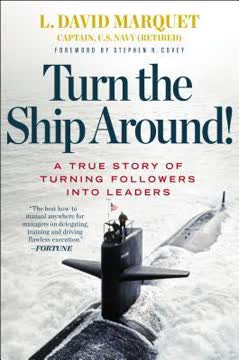
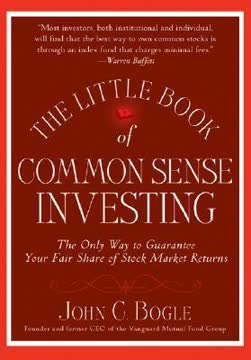

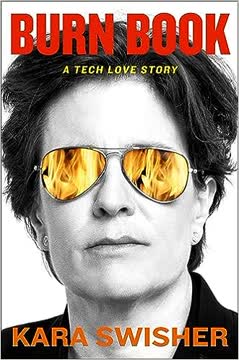
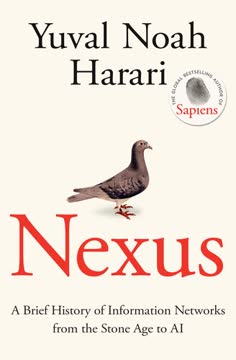
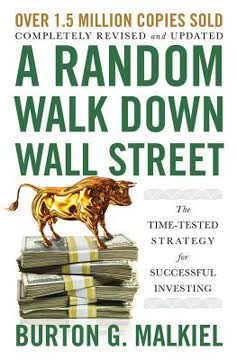
Download PDF
Download EPUB
.epub digital book format is ideal for reading ebooks on phones, tablets, and e-readers.




